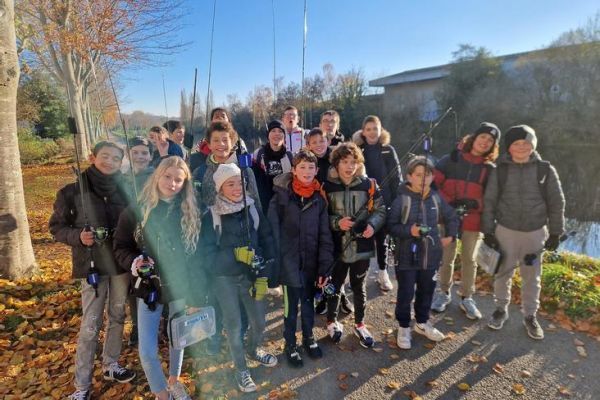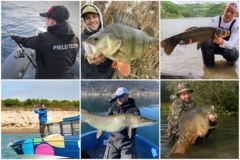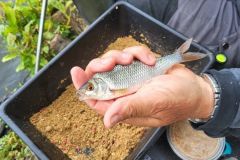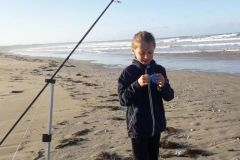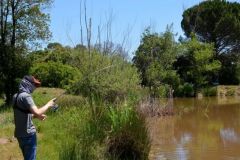Hello Thierry, we are happy to meet you to know a little more about your fishing section!
T. Ashtray hello Benjamin, I'm also very pleased because this is a project that is very close to my heart and in which I invest a lot.
What is the existing system and what are the objectives?
T. Ashtray this is a sports section entitled "Fishing and Nature". In the same way as the other more traditional sports sections, they concern the 4 levels of the school, therefore from the 6th to the 3rd year, at a rate of 3 hours per week. It is composed of 20 students, 5 per class level.
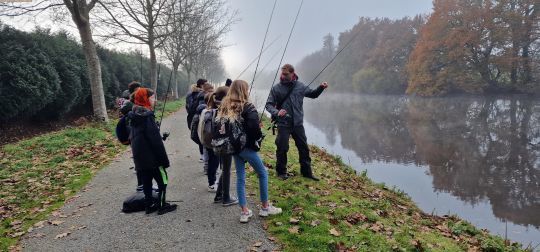
The objectives of the section are obviously the learning of different techniques of fishing with baits and lures on a technical and strategic level. While it is obvious that making a few catches during the outings is important for the children, the most important thing is that they are able to identify the factors of presence and activity of fish and master the basics necessary to be autonomous and reinvest their skills and knowledge outside of school.
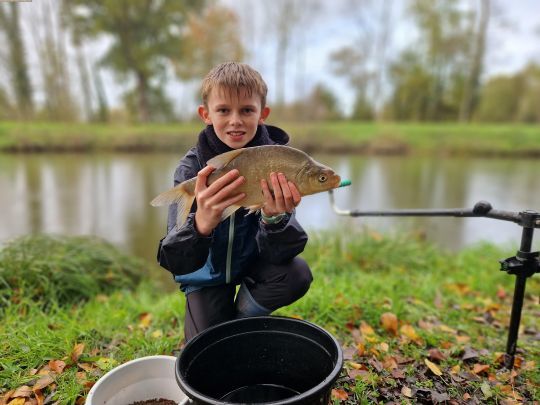
But the objectives are not only halieutic, and the ambition is not only to (re)connect the students to the natural environment, to understand its functioning and the stakes and to apprehend fishing as a support activity to develop interdisciplinary skills.
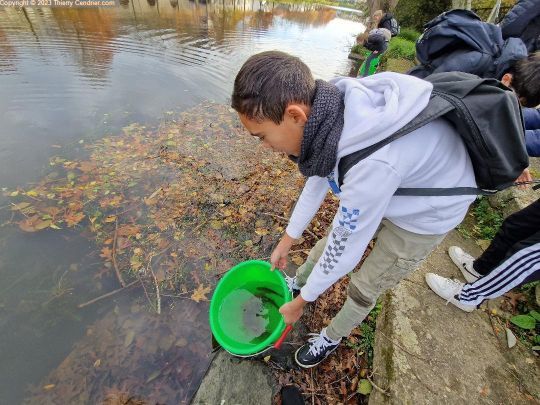
How does the section work?
T. Ashtray a 3-hour slot on Friday afternoons is dedicated specifically to the sports section. During the first and third trimesters, the students start with theoretical work, mainly on the mastery of the material and technique, and then with practical work on the banks of the Blavet. They are divided into two groups. The youngest ones fish with the big rod with Marcel Le Boulh, the volunteer of the Aappma of Pontivy and the older ones discover fishing with lures with me.
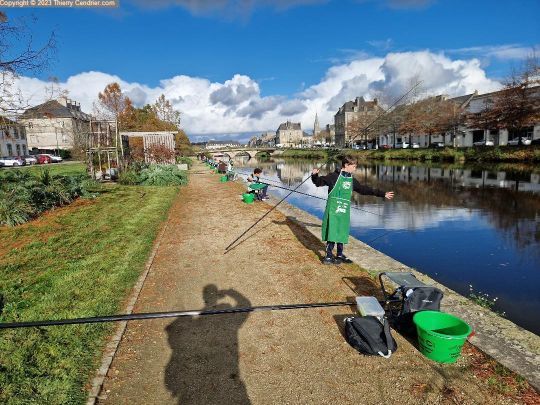
The second term focuses on theoretical and interdisciplinary work.
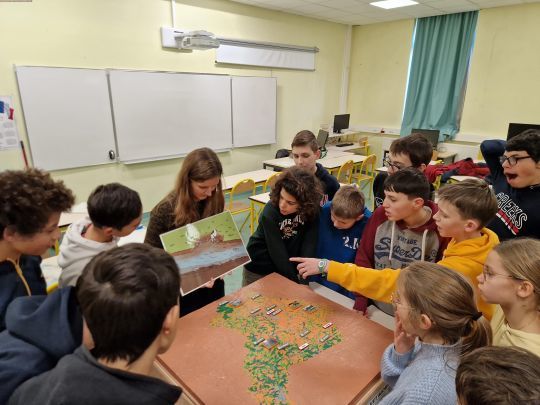
How was the idea born?
T. Cendrie r: Following the confinement, the possible physical activities in PE were considerably reduced. We did a lot of walking along the Blavet and I realized that the aquatic environment interested many students. They were scanning the water and talking to me about fishing.
We had the possibility to create a sports section at that time, the geographical situation of the college and the presence of a dynamic local Aappma constituted an ideal conjuncture to launch the project. I submitted the idea to my headmistress and the teaching staff who all immediately gave a favourable opinion.
Do students take part in activities other than fishing?
T. Ashtray yes, of course! Apart from fishing, the students, depending on their grade level, participate in various interdisciplinary activities. First of all, every Friday, a member of the section has to write a report of the day for the school website.
But there are also more occasional activities, especially during the second term. The 4th and 3rd grade students assemble their fishing rods while the younger students create a fisherman's notebook in English.
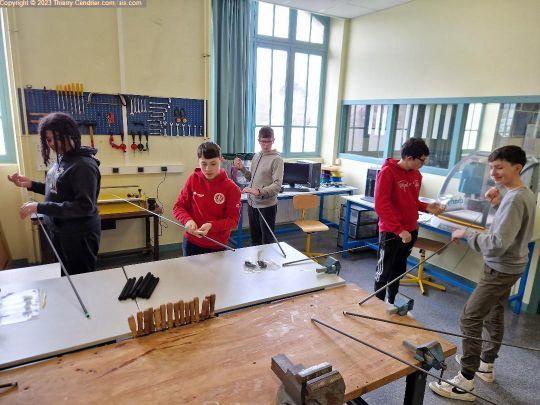
They will also take part in writing poetry on the theme of nature with the French teacher, a meeting with the archivist of Pontivy on the history of the Blavet locks, a lure decoration with the plastic arts colleague. The study of a model of the Blavet watershed or the taking of water level readings in Quiberon to understand the phenomenon of tides with the physics teacher.
The program also includes the study of the sea shore, the fauna and flora of the foreshore or the quality of the water of a stream near the school, through chemical measurements of the water and the presence of larvae. The fields of application are very numerous and all school disciplines can take part in the project.
I imagine it's not easy logistically in a school setting?
T. Ashtray the project is not easy to set up and it requires a restrictive organization for the whole school, so it is a project that must be accepted by all. Beyond the creation of the project and the setting up of a timetable allowing a viable and balanced internal functioning for all the classes, it is also necessary to find partners. Thus, we have set up a partnership with the Aappma of Pontivy and the federation of Morbihan, but also punctually with the CFA of Caulnes which trains the future fishing guides.
For the material, how did you organize yourself?
T. Ashtray the material aspect is not easy! Unlike other sports activities, the need for specific equipment is important and the school has had to draw on its own funds to finance travel, especially during outings.
But I was also able to count on the presence of generous distributors who immediately adhered to the project and who allowed the structure to function efficiently and sustainably with very large donations.
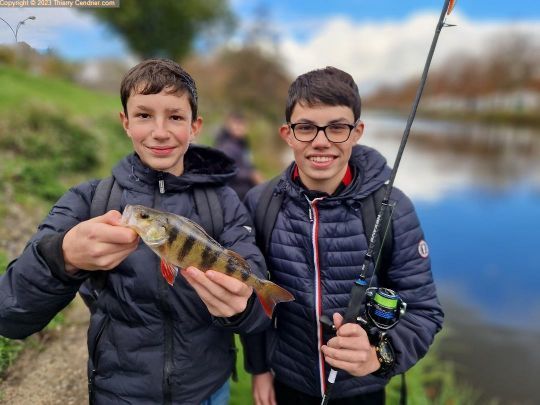
Thus, the Shimano Europe group provides each student with a rod and reel set with braid and a selection of lures. But that's not all, as Rodhouse also provided each child with the necessary materials to assemble his or her own fishing rod. Finally, Delalande and Flashmer were also very generous with lures, accessories, landing nets and other materials.
I am proud that through this section emblematic actors of fishing in France have gathered around the same project to allow a future generation of fishermen to practice with quality equipment and in comfortable quantities.

Again, a huge thank you to them and their representatives, because without their support, the implementation of such a structure would have been complicated.

 /
/ 